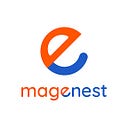B2B ECOMMERCE FOR DISTRIBUTORS: TOP 5 PLATFORMS & HOW TO CHOOSE
E-commerce becomes an inevitable trend that businesses, even B2B enterprises, have to catch up with. By 2023, B2B eCommerce is predicted to account for 17% of all B2B sales in the US, totaling $1.8 trillion. However, implementing B2B eCommerce for distributors is not a piece of cake. Unlike B2C, customers’ buying process in the B2B model is extremely complex due to the involvement of many people, from C-suite to procurement and finance teams. Not only that, the value of each order is absolutely huge. Thus, it takes clients a long time to choose the final supplier and they are careful to consider which is the best product.
That is why merchants need an A-to-Z guidebook showing how to carry out B2B eCommerce for distributors. Let’s dive into it in this blog!
Common eCommerce challenges of B2B distribution companies
Complications of B2B business
Some B2B businesses think that eCommerce is not an option for them due to the complex characteristics of this model. The buying-making process is complicated because it involves several stakeholders (C-suite manager, procurement teams, finance departments,..) and several stages. Besides, when a B2B product or service is purchased, clients want to avoid changing suppliers, because the change leads to time-consuming processes or higher costs.
The most common concerns when building a B2B eCommerce system for distributors includes:
- Pricing in contracts.
- Terms and agreements for customers.
- Exclusive products.
- Varying payment and shipping options.
While these are interesting points to explore with your eCommerce technology vendor, they are not impediments to your business transformation. With the proper eCommerce solution, you can easily overcome these obstacles.
Technical capacity of employees
Implementing eCommerce tools seems like a daunting task that requires employees to know about technology and the functions of the eCommerce system. Your team can struggle to handle the new eCommerce initiative at the beginning. Besides, employees face up with the “resistance to change” problem. Sales reps may feel threatened by new purchasing tools. The IT team is suspicious that the new site is unsafe and can disrupt the process.
Thus, business owners and managers should have a plan for training staff before applying a new system. Of course, it takes time. However, if you’re thinking about your company’s long-term success, it’s a risk worth taking.
B2B purchasing
Unlike B2C buyers, B2B clients have complex buying processes, especially in the payment stage. It is not easy like filling in credit card information or logging into a PayPal account. With high-value orders, businesses need a safe money transfer method that involves banks. In eCommerce, B2B enterprises often use ACH payment.
Not only payment issues, but companies must also handle other ones when using an eCommerce system, including an optimal solution integrating with the procurement process of clients, payment requests, shipping, and manager’s approvals. Not any eCommerce solution can solve these problems. It depends on the platform and integrations and functions it provides.
Source: https://magenest.com/en/b2b-ecommerce-for-distributors/
